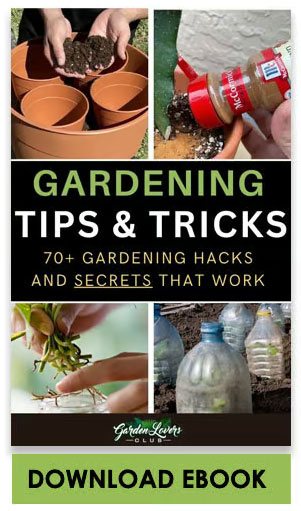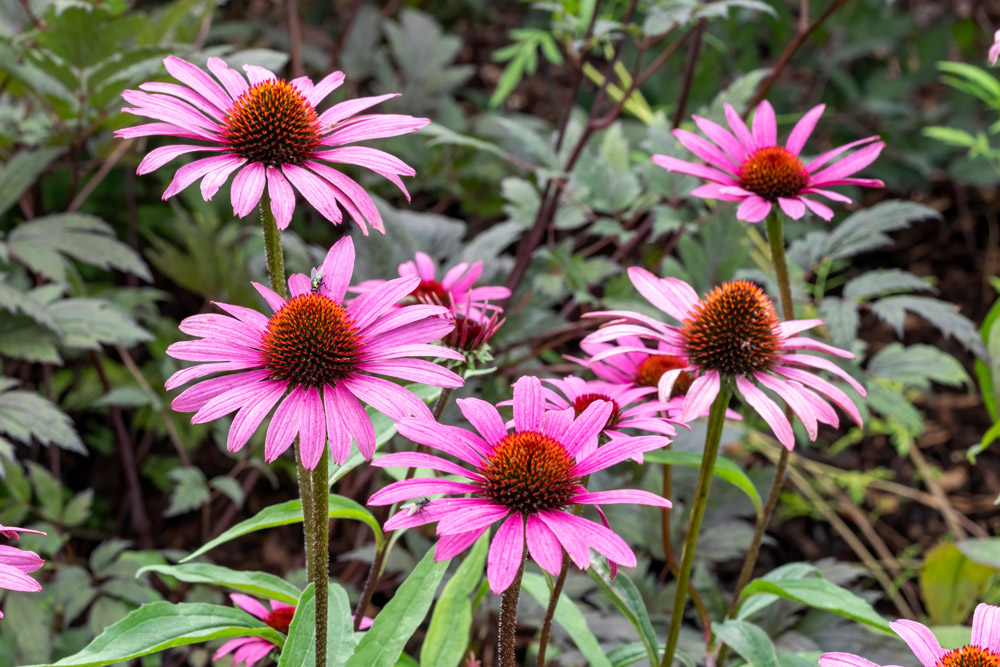
Moss in garden beds can be a persistent problem. While it lends some landscapes a stunning, natural aesthetic, it can also be an unwelcome intruder, preventing your plants from thriving.
To create a healthy, visually appealing garden, tackling moss issues promptly and effectively is important.
To get rid of moss in your garden beds, you’ll need to address the underlying causes. By modifying the conditions of your garden bed, you can discourage moss growth and protect your delicate plants.
In this article, you will learn practical and actionable techniques to eliminate moss from your garden beds, paving the way for a vibrant, flourishing landscape.
Identify the Type of Moss
Before you can effectively get rid of moss in your garden beds, it’s essential to identify the type of moss you’re dealing with. Mosses are small, non-vascular plants that grow in dense clumps or mats. They thrive in damp, shady environments and can sometimes take over your garden beds if left unchecked.
Common Moss Types
There are many different types of moss, but here are a few common ones you might encounter in your garden beds:
- Bryum capillare: Also known as thread moss, this moss forms dark green or brownish cushions with thin, thread-like stems and small oval leaves.
- Rhytidiadelphus squarrosus: Known as springy turf moss, this variety has long and coarse stems with squarrose, pointed leaves. It typically grows in dense mats.
- Ceratodon purpureus: This moss, commonly called fire moss or purple forkmoss, grows in dense tufts with reddish stems and narrow, pointed leaves, turning purple when exposed to sunlight.
- Polytrichum commune: Commonly referred to as haircap moss or common hair moss, this type has tall, erect stems with elongate leaves and can grow in various conditions, from damp soil to rocks.
By identifying the specific moss variety in your garden beds, you can tailor your approach to effectively eradicate it and prevent future growth. Refer to garden guides or consult experts at your local garden center to accurately identify the moss in your garden.

Evaluate the Garden Environment
Shade Factors
In order to understand the presence of moss in your garden beds, start by evaluating the shade factors. Moss typically thrives in shaded areas; hence, check for nearby trees or structures that may be providing excessive shade. Consider pruning trees or modifying structures to allow more sunlight to reach your garden beds. Additionally, be aware that the sun’s position changes with the seasons, so observe how sunlight reaches your garden throughout the year.
Soil Conditions
Next, examine the soil conditions in your garden beds. Poor soil drainage and compaction can lead to an environment favorable for moss growth. Test your soil’s pH level, as moss prefers acidic soil with a pH between 5.0 and 6.0. You can buy a soil pH test kit at your local gardening store. If the pH is too low (too acidic), you can apply lime to the soil to raise its pH and make it less hospitable for moss growth.
- Improve soil drainage: Consider adding organic matter like compost, peat moss, or well-rotted manure to help improve soil structure and drainage.
- Aerate compacted soil: Use a garden fork or mechanical aerator to break up compacted soil and improve air and water circulation in the soil.

Moisture Levels
Finally, monitor the moisture levels in your garden beds. Moss thrives in constantly damp areas, which can be due to overwatering, poor drainage, or a combination of both. Make sure to:
- Avoid overwatering: Water your plants deeply but less frequently to encourage deep root growth. This will also help the soil dry out appropriately between waterings.
- Improve drainage: In addition to the methods mentioned above, consider installing gravel or adding raised beds to promote proper drainage and discourage moss growth.
By addressing the factors above—shade, soil conditions, and moisture levels—you can create an unfavorable environment for moss in your garden beds and more effectively thwart its growth.
Methods for Moss Removal
Manual Removal
Removing moss by hand can be effective for small areas. First, loosen the moss using a hand rake or garden hoe. Then, gently pull the moss out while being cautious not to damage any plants growing nearby. Collect the removed moss and dispose of it properly to avoid spreading spores. Make sure to wear gloves to protect your hands.
Chemical Treatment
For a more aggressive approach, you can use chemical treatments. Begin by selecting a moss killer that is specifically designed for garden beds. Follow the manufacturer’s instructions for proper application and dosage. Typically, you’ll mix the chemical with water and apply it using a sprayer. Be cautious not to spray the solution on your desired plants, as it may harm or kill them. After the treatment, wait for the moss to die and then remove it manually.
Note: Chemical treatments may have negative consequences for the environment and possibly pollinate nearby plants, so use them as a last resort.
Natural Solutions
If you prefer eco-friendly options, there are natural solutions for moss removal.
- Vinegar: Mix equal parts water and white vinegar in a spray bottle. Apply it directly to the mossy areas, being careful not to spray on your plants. After a couple of days, the moss should turn brown and can be easily removed.
- Baking soda: Create a solution of 1 tablespoon of baking soda per 1 quart of water. Spray it onto the moss and allow it to sit for a few days. The moss should die and can then be removed.
- Iron sulfate: For a less invasive approach, dissolve iron sulfate in water and spray it onto the moss. Although this is gentler on your plants, it may take more applications to see results.
Regardless of the method you choose, keep in mind that maintaining a healthy garden with proper drainage and an adequate amount of sunlight will help prevent moss growth.














